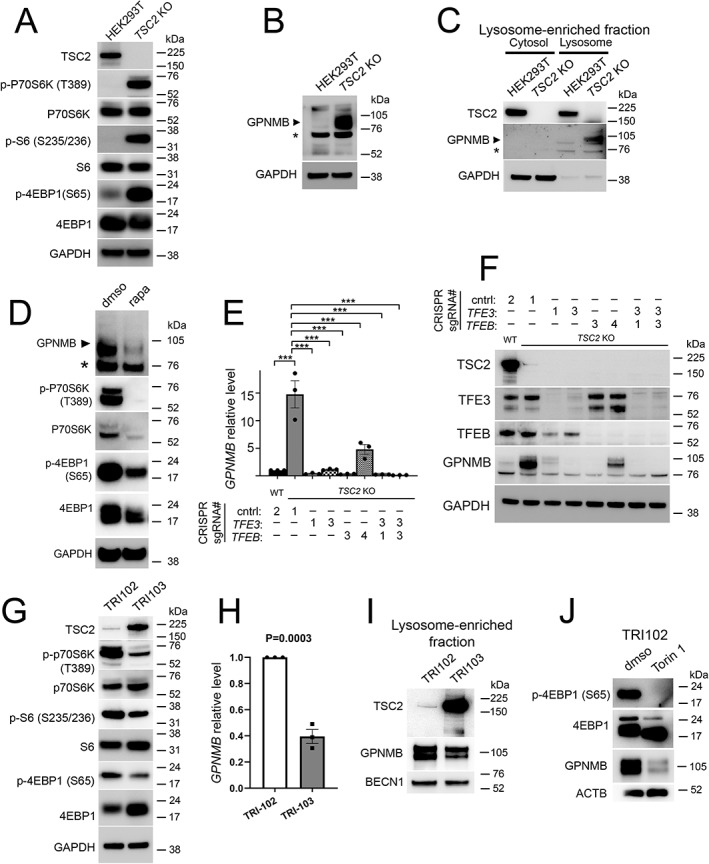Figure 1.

GPNMB is upregulated following TSC2 loss in a TFE3/TFEB‐ and mTORC1‐dependent fashion. (A) Immunoblotting of whole‐cell lysates from parental and TSC2 KO HEK293T cells for TSC2 and mTORC1 activation markers. (B) Immunoblotting of whole‐cell lysates from parental and TSC2 KO HEK293T cells for GPNMB. A non‐specific band (*) based on the siRNA experiment in supplementary material, Figure S2 is present in this cell line by immunoblotting. (C) Immunoblotting of cell lysates enriched for lysosomal content from parental and TSC2 KO HEK293T cells. (D) Immunoblotting of whole‐cell lysates from TSC2 KO HEK293T cells with or without 72‐h treatment with mTOR inhibitor rapamycin (200 nm). (E) RT‐qPCR for relative GPNMB gene expression in TSC2 KO HEK293T cells with or without genomic deletion of TFE3, TFEB, or TFEB and TFE3 (r = 3; ***p < 0.0001 by one‐way ANOVA). (F) Immunoblotting of whole‐cell lysates from TSC2 KO HEK293T cells with or without genomic deletion of TFE3, TFEB, or TFEB and TFE3. (G) Immunoblotting of whole‐cell lysates from TRI‐102 parental cells (TSC2 −/−) and TRI‐103 cells (TSC2 −/− with stable transfection of wild‐type TSC2) for TSC2 and mTORC1 activation markers. (H) RT‐qPCR for relative GPNMB gene expression in TRI‐102 and TRI‐103 cells. (I) Immunoblotting of cell lysates from TRI102 and TRI103 cells enriched for lysosomal content. (J) Immunoblotting of whole‐cell lysates from TRI‐102 cells with or without 72‐h treatment with mTOR kinase inhibitor Torin 1 (1 μm).
